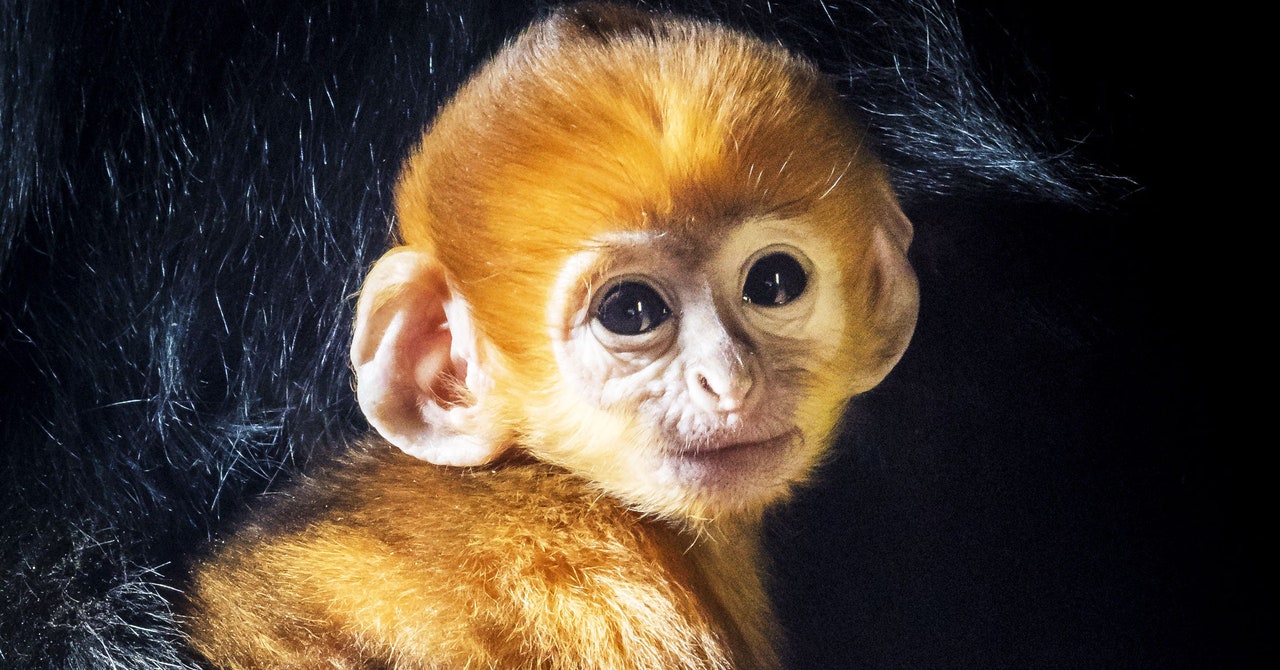
The first thing you might notice about the Delacour’s langur is its color. It’s got a jet black torso, limbs, and head, with a shaggy white butt sandwiched in the middle. (These monkeys—Trachypithecus delacouri if you want to get technical—quite literally look like Oreos.) But that’s just how the adults look. The babies are a different story: They’re orange.
This is their distinct “natal coat,” which fades after a few months. Babies from dozens of other primate species also have fur that’s a different color from that of adults. “One of the big questions has always been why—why would they have distinct coats?” asks Ted Stankowich, an evolutionary ecologist and Director of the Mammal Lab at California State University Long Beach.
Primatologists have pitched a lot of ideas, depending on the species. Maybe it’s an environmental adaptation. Or a tried-and-true ploy to get attention from nearby adults. Now, writing in the American Journal of Biological Anthropology, Stankowich’s team thinks they’ve figured it out, and the answer is a little gruesome: The weird coats may protect the babies from infanticide.
Among primates, new mothers care for their babies in tight social groups, or troops. Langurs, for instance, live in groups of 20 to 50 with several (often related) females, their offspring, and one male. Every two or three years, an intruding male from another troop may oust the dominant male and take over. These interlopers want to mate with the females, and they bring with them new genes. But if they arrive while a female is nursing another male’s baby, they may bring trouble. “Adult males who come in and take over a troop will kill the infant in order to bring the mothers back into estrus earlier,” says Stankowich.
The team analyzed data on infant and adult coats, behavior, and biology for 286 primate species, and they found a strong correlation between species with distinct infant coats and the occurrence of infanticide. The team’s hypothesis is that the conspicuous hair color is an indirect form of protection: Babies with distinct coats elicit more care from their mothers. When infants get more attention and nurturing, they develop faster. That means they’re vulnerable for less time. “Infanticide can happen at any time,” says Stankowich. “And the shorter the interval that these infants are susceptible and small, the better for the mothers.”
Amanda Spriggs, an expert in primate coloration at SUNY Albany who was not involved in the study, calls this hypothesis “compelling.” She notes that the hazard of this adaptation is that it makes another type of attack easier. “It’s like putting a target on your baby’s back for a predator,” says. From an evolutionary standpoint, a species would only maintain such a risky adaptation if it was mitigating an even bigger threat. “Having a distinctive natal coat must have some sort of really big fitness payoff,” she says. And what could be a bigger evolutionary payoff than protecting the next generation?
That said, there are plenty of good reasons why a baby might look different from its parents. For example: camouflage. Some antelopes have babies with spotted or striped coats; when the adults leave them to go feed, that pattern keeps them hidden among bushes. Harp seals have pups with snowy white coats that blend with the ice, while other species of seals that leave their offspring in caves tend to have darker baby fur.


